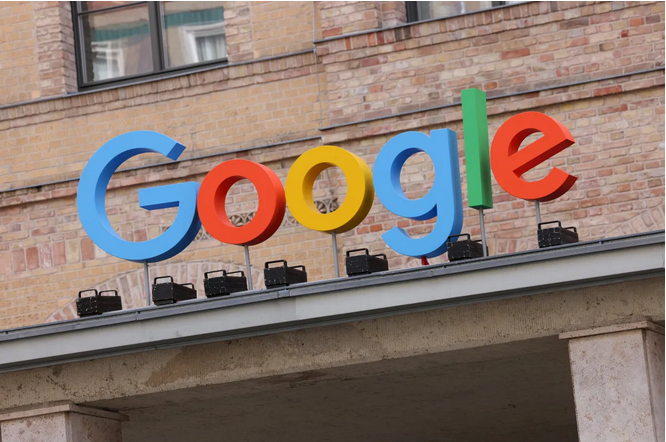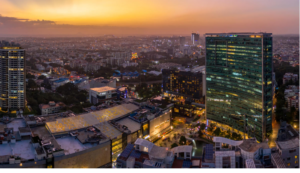
Google Labs, Google’s experimental arm, is testing a new image generator called Whisk. This tool allows people to prompt with images instead of text, allowing them to remix a photo by altering the subject, scene, and style.
Whisk uses Google’s image-generation model, Imagen 3, to combine three images: one for the subject, another for the scene, and one for the style. For instance, you can select a photo of yourself as the subject, a futuristic landscape as the scene, and an anime style for the final look.
The model automatically generates a detailed caption of your images, which is then used to guide Imagen 3 in creating a remix of the photo. You can also input text prompts to further define the desired outcome, including detailed descriptions like “Subject is riding a flying bike.”
Because Whisk only focuses on a few key characteristics from each image, the company explains that the results may not always meet your expectations. For example, the generated subject could differ in height, weight, hairstyle, or skin tone. Google says you can view and edit the underlying prompts at any time.
Google has been at the forefront of artificial intelligence (AI) and machine learning (ML) research, pushing the boundaries of what is possible with technology. The company’s latest experiment, a new image generator that remixes three images into one creation, is a testament to its innovative spirit.
What is the Image Generator?
The image generator, which is still in its experimental stages, uses a combination of AI and ML algorithms to take three input images and generate a new image that combines elements from each of the original images. The generator can take a wide range of images as input, from landscapes and portraits to objects and abstract designs.
How Does the Image Generator Work?
The image generator uses a type of AI algorithm called a generative adversarial network (GAN). GANs consist of two neural networks: a generator and a discriminator. The generator creates new images based on the input images, while the discriminator evaluates the generated images and provides feedback to the generator.
In the case of Google’s image generator, the GAN is trained on a large dataset of images, which allows it to learn patterns and relationships between different visual elements. When the generator is given three input images, it uses this learned knowledge to create a new image that combines elements from each of the original images.
Potential Applications of the Image Generator
The potential applications of Google’s image generator are vast and varied. Here are a few examples:
1. Art and Design: The image generator could be used to create new and innovative artworks, or to generate design concepts for products and architecture.
2. Advertising and Marketing: The generator could be used to create personalized advertisements and marketing materials, tailored to individual customers’ interests and preferences.
3. Education and Research: The image generator could be used to create interactive educational materials, or to generate data for research studies in fields such as computer vision and machine learning.
4. Entertainment: The generator could be used to create new and innovative forms of entertainment, such as interactive stories and games.
Benefits of the Image Generator
The image generator has several benefits, including:
1. Increased Creativity: The generator can help users to think outside the box and come up with new and innovative ideas.
2. Improved Efficiency: The generator can save users time and effort by automating the process of creating new images.
3. Enhanced Personalization: The generator can be used to create personalized images and designs, tailored to individual users’ interests and preferences.
4. New Forms of Art and Design: The generator can be used to create new and innovative forms of art and design, pushing the boundaries of what is possible with technology.
Challenges and Limitations
While the image generator is a powerful tool, it is not without its challenges and limitations. Here are a few examples:
1. Quality and Coherence: The generator may struggle to produce high-quality, coherent images, especially when dealing with complex or abstract subjects.
2. Bias and Diversity: The generator may reflect biases and stereotypes present in the training data, which could result in a lack of diversity and representation in the generated images.
3. Intellectual Property: The generator raises questions about intellectual property and ownership, as it is unclear who owns the rights to the generated images.
4. Ethics and Responsibility: The generator raises ethical concerns, such as the potential for misuse or manipulation, and the need for responsible and transparent use of the technology.
Conclusion
Google’s image generator is a revolutionary technology that has the potential to transform the way we create and interact with images. While it is still in its experimental stages, the generator has already shown impressive results, and its potential applications are vast and varied. However, as with any new technology, there are also challenges and limitations that must be addressed. As the generator continues to evolve and improve, it will be exciting to see how it is used and what new possibilities it enables.
Google’s latest experiment with a new image generator that remixes three images into one creation has several benefits. This innovative technology has the potential to revolutionize the field of image generation and manipulation.
Benefits for Artists and Designers
1. New Creative Possibilities: Google’s image generator offers artists and designers new creative possibilities, enabling them to combine different images in innovative ways to create unique and original artworks.
2. Increased Efficiency: The image generator saves time and increases efficiency, allowing artists and designers to focus on the creative aspects of their work rather than spending hours manipulating images.
3. Endless Inspiration: The image generator provides endless inspiration, as artists and designers can experiment with different combinations of images to create new and interesting effects.
Benefits for Businesses and Marketers
1. Enhanced Branding and Marketing: Google’s image generator enables businesses and marketers to create unique and engaging visual content that enhances their branding and marketing efforts.
2. Increased Social Media Engagement: The image generator helps businesses and marketers increase social media engagement, as users are more likely to interact with visually appealing and unique content.
3. Improved Advertising and Promotion: The image generator enables businesses and marketers to create eye-catching and effective advertisements and promotional materials that grab the attention of their target audience.
Benefits for Education and Research
1. New Teaching and Learning Tools: Google’s image generator provides new teaching and learning tools, enabling educators to create interactive and engaging visual aids that enhance student learning and understanding.
2. Advancements in Image Analysis and Understanding: The image generator contributes to advancements in image analysis and understanding, as researchers can use the technology to study and analyze the composition and structure of images.
3. Improved Data Visualization: The image generator enables researchers to create more effective and informative data visualizations, which can help to communicate complex information and insights to a wider audience.
Technical Benefits
1. Advanced AI Technology: Google’s image generator utilizes advanced AI technology, including machine learning and deep learning algorithms, to analyze and combine images in innovative ways.
2. High-Quality Image Generation: The image generator produces high-quality images that are visually appealing and engaging, making it an ideal tool for a wide range of applications.
3. Flexibility and Customization: The image generator offers flexibility and customization options, enabling users to adjust the settings and parameters to achieve the desired results.
Conclusion
Google’s new image generator that remixes three images into one creation has several benefits for artists, designers, businesses, marketers, educators, researchers, and the wider community. This innovative technology has the potential to revolutionize the field of image generation and manipulation, offering new creative possibilities, increased efficiency, and endless inspiration.



